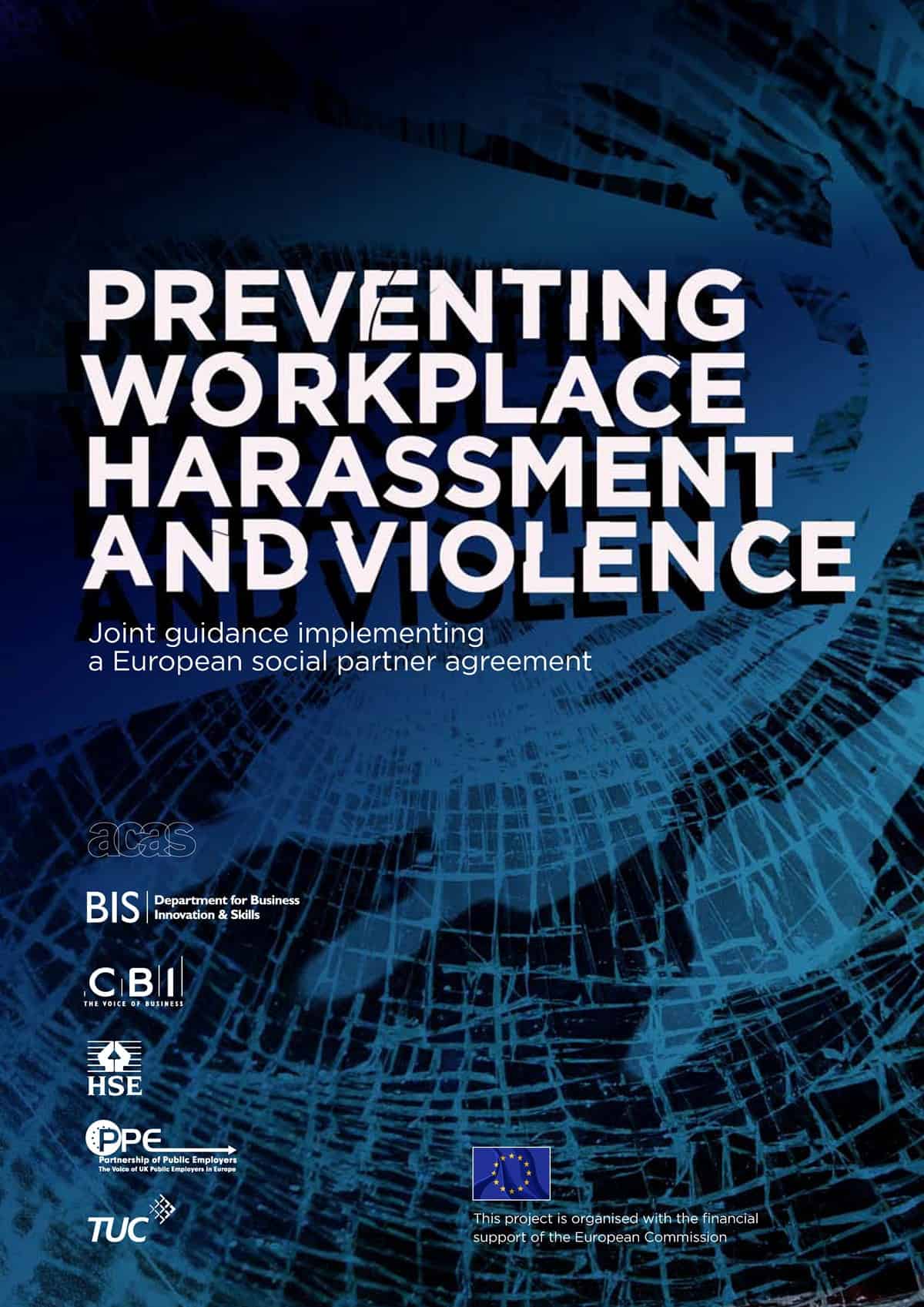On 26 January 2010, a fascinating document was released from England concerning workplace harassment and violence. This builds on earlier work in Europe and has led to the joint guidance on “Preventing Workplace Harassment and Violence“.
 The guidance has the demonstrated support of employer, employee and government representatives who have committed to
The guidance has the demonstrated support of employer, employee and government representatives who have committed to
“…ensuring that the risks of encountering harassment and violence whilst at work are assessed, prevented or controlled.”
Significantly they also state
“We will implement our agreement and review its operation.”
This support for this guidance seems to place some of the Australian Government’s calls for social inclusion in a strictly political realm as there does not seem to be the same level of clout as the above guidance. The Australian social inclusion strategy has partnerships and collaborations at the political level but it seems to have looked at too big a picture by trying to affect social change rather than targeted change that, over time, is likely to provide secondary benefits.
 The European and, now, the English commitment has been constructed on over a decades’ lobbying and investigation on matters concerning “dignity at work”, a concept that deserves a broader application into other jurisdictions. In 2001 a Dignity at Work Bill was being presented to the English Parliament. It was interesting that, at that time, advocates were looking beyond workplace bullying to the contributor factors. Factors that leads to a variety of psychosocial hazards.
The European and, now, the English commitment has been constructed on over a decades’ lobbying and investigation on matters concerning “dignity at work”, a concept that deserves a broader application into other jurisdictions. In 2001 a Dignity at Work Bill was being presented to the English Parliament. It was interesting that, at that time, advocates were looking beyond workplace bullying to the contributor factors. Factors that leads to a variety of psychosocial hazards.
The significance of the issue can be seen by the number of related guidances and publications that have appeared in England since that 1990s – Dignity at Work in universities, Crown Prosecution Service, to identify only a couple.
Around the same time, the workplace bullying issue gained enormous momentum from the annual OHS survey of the Australian Council of Trade Unions into stress which showed that many union members pointed to bullying as a major cause of stress. This limited survey gave the union movement the “in” to gain safety improvements for their members and other workers. But the significance of bullying overshadowed the overall results of the stress survey that could have identified a core issue in a lack of respect and dignity in the workplace.
The attraction of the English guidance is that it does not seek to spell out what organisations need to do to prevent violence and harassment. Although safety guidances often have to apply to the lowest common denominator, they can also be condescending. This guidance has a tone that says
“we know you are all aware of the issues and we know you want to do something about it. Here is a document that we all agree illustrates the basic framework to begin acting against workplace harassment and violence. And don’t forget, in 2013, we’ll be checking up on progress.”
The guidance also outlines to employers what they must do, what they should do and what they could do. The provision of options is a practice that OHS consultants have applied for years as it gives a variety of solutions as well as emphasising that it is the employer’s responsibility to act. The “must” options are
- “Ensure, so far as it is reasonably practicable, the health, safety and welfare at work of their workers;
- Assess the risks to their workers (including the risk of reasonably foreseeable violence), decide how significant these risks are, decide what to do to prevent or control the risks, and develop a clear management plan to achieve this;
- Establish clear grievance and disciplinary procedures consistent with the ACAS [
Advisory, Conciliation and Arbitration Service] code of practice;
- Consult with the workforce and their representatives about risk assessments and action arising from them;
- Ensure that everyone is aware of their harassment and violence policy and their responsibilities in relation to it.”
The guidance has a review timetable of three years where its impact will be evaluated and be passed on to the European program.
The Australian social inclusion strategy has not benefited from the evolution of the issues of dignity and social respect that England has experienced over, at least, a decade. This may have something to do with the dominance of the Labour Party in England over that time providing a sympathetic ear to social issues (although commentators in England may not agree). The situation was the opposite in Australia where a conservative government had a less consultative approach.
Australia’s program smacks of partisanship rather than genuine social cultural reform. It also does not seem to have taken notice of the English progress on the matter of dignity at work. The early focus on workplace bullying instead of the contributing factors to occupational stress limited the impact of any controls on psychosocial hazards. Also Australia has looked at the dignity agenda through social factors instead of the workplace which has made for a much rougher pathway to success.
The English guidance is a must-read and it has one of the best lists of further information on violence and harassment at work.

2 thoughts on “Dignity At Work, different UK and Australian approaches”